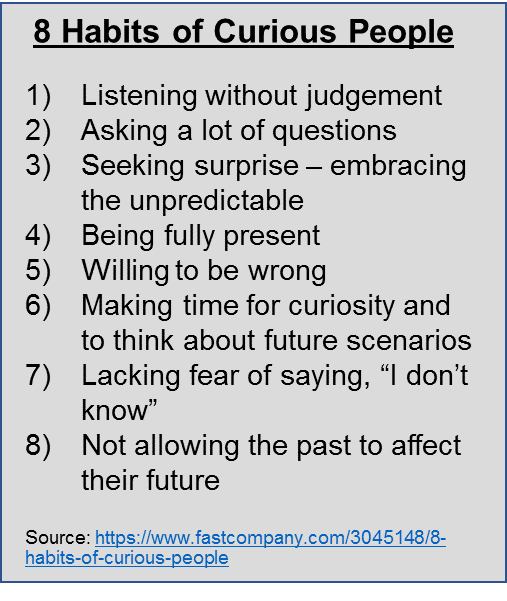Payments Leader
Curiosity as the Driver of Culture, Career Growth and Leadership Development: Part 2 by Dondi Black
June 28, 2018
Dondi Black , FIS | Vice President of Payment Strategy
Curiosity – that urge to ask, “What if?” – can be a strong driver of innovation, as I highlighted in a recent blog. That’s far from the only benefit, however. Leaders who foster a culture of curiosity within their organizations can use it to achieve stronger growth and improvement.
In this second portion of a two-part series, I show you how it can be done.
Knowing the “Why” That Drives What We Do
At the core of every effective elevator pitch for the products we sell, the business partners with whom we engage and the leaders we impress is the “why” – the thing that drives us and defines our roles.
Discovering my own “why” has been a game changer for me. It allows me to remain excited about what I do even after two decades in the financial industry. For me, that “why” is being part of a team, with a culture that fosters my personal curiosity about technology and consumer behavior, and providing safe, affordable access to innovative products and services.
Most Work in Incurious Environments
Studies show that curiosity motivates progress, but how many employees are fortunate enough to work in an environment that nurtures curiosity? According to findings published by Merck, not many.
Highly-regulated industries – banking is a prime example – gravitate toward cultures of risk averseness because employee rewards and tenures are often linked to limiting risk. I’m suggesting that people should start taking risks by thinking differently, embracing innovation and melding the diverse perspectives within their organizations into a unified mission.
The Benefits of Becoming Curious
From my experience, infusing curiosity into company culture results in multiple benefits – speed to market with innovation, profitable growth and a deeper bench of leaders as the byproduct of the mentoring, coaching and networking enabled in curious cultures.
Can curiosity blossom in highly regulated industries? Just look at Richard Branson – the affable entrepreneur who approaches life with an almost childlike curiosity and the courage to question the status quo. To ask why and to explore what could be are at the core of his success.
“Having an insatiable curiosity for the world around you is an essential skill as an entrepreneur.” – Richard Branson
Not lacking his share of battles with regulators, Branson is now working alongside the British government to launch Virgin Galactica, his space travel business. Their common goal is to regulate such business to prioritize safety and industry growth without stifling innovation.
Multiplying the Effects of Curiosity
Branson has proved that curiosity is catching, not only with partners but with employees. Leaders who exhibit curiosity multiply the effects through their employees.
Any cultural shift takes time, perseverance, ongoing mentoring and coaching and leading by example. This roadmap represents a starting point for leaders to develop their own approaches to cultivating curiosity within their organizations. Broken into three timeframes – short, mid-, and long-term – it reflects the fact that cultural change is a process.
Short term: next 6 months
- Identify leaders who have prior experience, skills and natural curiosity they can share to improve cross-functional communications and inspire curiosity in others.
- Identify the barriers to curiosity and map out solutions for mitigating their effects.
- Reward curiosity by frequently engaging with teams and encouraging questions without judgment.
- Spread the word to build a culture of trust – up, down and across the organization.
Mid-term: over the next 12 months
- Put solutions for reducing barriers into practice by enlisting the leadership team. Employees learn how to behave by observing their leaders.
- Examine available data to determine how well your current products and solutions are being adopted and performing. Invest in tools that enable your firm to take a fresh look at performance data.
- Use meetings to ask questions about solving problems and leveraging potential opportunities such as how to build deeper and more relationships with desirable consumer segments.
- Encourage shared learning, including what’s happening outside of your industry. For example, carve out time for people to share information about changes that are occurring in the broad marketplace – changing consumer behaviors and expectations, new technologies that might have parallel applications for your company.
Long-term: over the next 24 months
- Organize meetings around “what if” scenarios to generate insights and ideas to improve performance and efficiency.
- Challenge people at all levels to participate in ideation sessions.
- Elevate new ideas quickly to assess risks and rewards.
- Allow for small-scale failures. Avoid blame. Actively solicit ideas about how to fix problems.
“Step off the “villain, victim, hero triangle.” [And, move forward]. – Pat Christen, President and CEO of HopeLab

